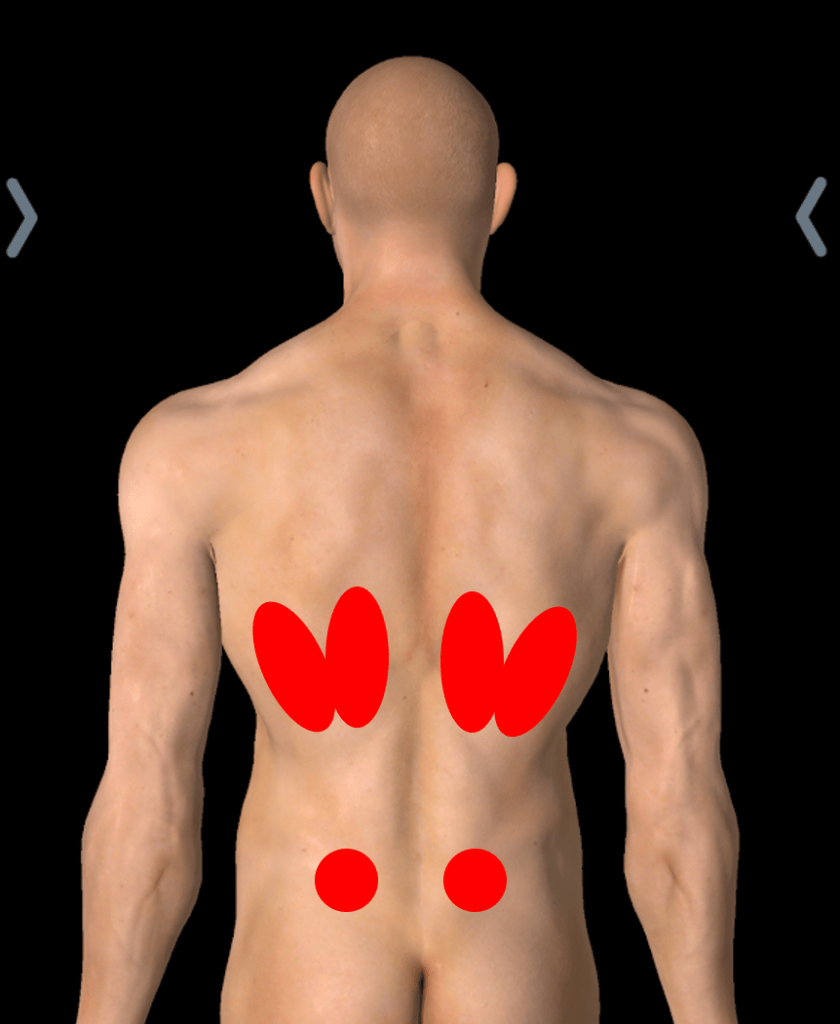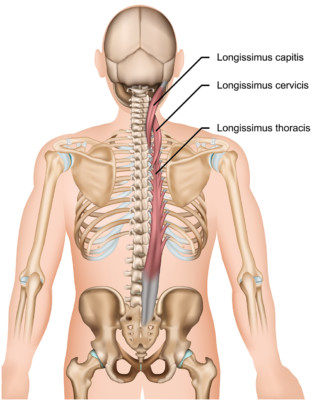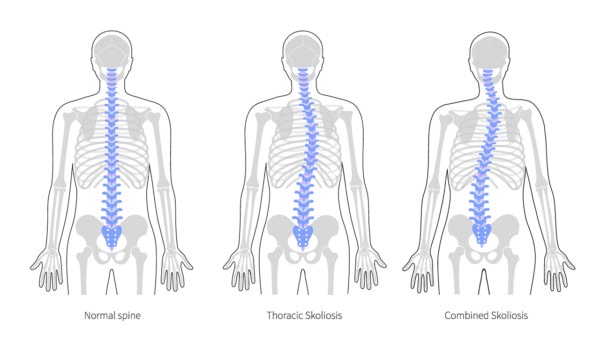What Causes Back Rib Pain?
In this article:
- What is back rib pain?
- Where do you feel back rib pain exactly?
- Which muscles are responsible?
- Can tendinopathy cause back rib pain?
- What are the other causes of back rib pain?
- How do you treat back rib pain?

Back rib pain is a term patients often use to describe pain that goes from the low back to the ribs. What causes this? The most common thing is not what Dr. Google usually tells us. Let’s dig in.
What Is Back Rib Pain?
Most patients use this term to describe what happens when pain radiates from the low back to the ribs. This pain seems to happen at the same time as their low back pain. It can feel like it’s impacted by taking a deep breath or breathing may be restricted.
Where Do You Feel Back Rib Pain Exactly?

The images above show the usual places where the rib back pain starts and ends. Sometimes patients just feel pain in the low back at the spot shown above. Or other times just pain in the lower ribs in the areas shown. You can tell if you have this problem by having someone palpate along the low rib cage in the areas shown. If these areas are tender and the pain is as described, this is probably your issue.
Which Muscles Are Responsible?
The term iliocostalis has two parts. Ilio=Ilium, which is a part of the pelvis. Costalis=ribs. Iliocostalis then means a muscle that travels from the pelvis to the ribs.

Medicalstocks/Shutterstock
The image on the left above shows the iliocostalis muscle. Note that it inserts at various parts of the back of the ribs. Like all muscles, it has a tendon on both ends, which is usually where the back rib pain begins and ends.
The muscle on the right is called the longissimus thoracis. This also goes from the back of the pelvis to the ribs, closer to the midline.
Let’s explore more.
Can Tendinopathy Cause Back Rib Pain?
If the back rib pain doesn’t go away on its own, it could be because of tendinopathy (1). This means that extra force on the iliocostalis causes the tendons on both ends of the muscle to get damaged and beat up. This leads to pain. But why is the muscle getting beat up in the first place?
What Are the Other Causes of Back Rib Pain?
So how does the muscle get overloaded? There are two main ways:
- Multifidus atrophy and instability
- Scoliosis
Multifidus Atrophy and Instability
There is a deep spinal muscle called multifidus that stabilizes one vertebra (backbone) on the other as you move (2). It can become weak and atrophied, which is something commonly seen on low back MRIs in back pain patients but often not read out by radiologists.
This leads to instability, which is where the vertebra crash into each other due to poor control. The body’s response to try to stabilize the area is to use the bigger back muscles. One of those is iliocostalis, which often goes into spasm. This causes the muscle to get beat up. To learn more about multifidus atrophy, see my video below:
Scoliosis

Pikovit/Shutterstock
Scoliosis is a side bending of the spine. The iliocostalis is impacted typically on one side. This is the side where the ribs are higher, as the muscle gets stretched and then beat up. See the red lines above which represents the muscles.
How Do You Treat Back Rib Pain?
Obviously, conservative care like physical therapy and chiropractic should be tried first. However, if that doesn’t help, there are ways to treat this problem. Regrettably, modern interventional pain management with the injection of steroids using x-ray guidance doesn’t have many answers for this issue. Nor is there a surgical solution. However, using x-ray and ultrasound guidance and orthobiologics, we routinely help patients with these problems.
Orthobiologics are things like platelet-rich plasma (PRP). This can be injected at both ends of the iliocostalis muscle at the injured and damaged tendons. PRP helps tendons heal, so that’s why it’s an excellent solution.
There is another part of treatment as well. Dealing with multifidus atrophy or scoliosis, which are the root causes. For multifidus atrophy, that’s a combination of injections into the atrophied muscles and other areas as well as physical therapy. To learn more, see my video below:
For scoliosis, this is the non-surgical treatment approach:
The upshot? Back rib pain is a common problem, but there isn’t much on what causes it and how best to help these patients. However, we treat these patients all the time with precise image-guided injections and are commonly able to help them. It’s all a matter of understanding what to treat and how.
__________________________________________________
References
(1) Zhu Z, Zhang J, Sheng J, Zhang C, Xie Z. Low Back Pain Caused by Iliopsoas Tendinopathy Treated with Ultrasound-Guided Local Injection of Anesthetic and Steroid: A Retrospective Study. J Pain Res. 2020;13:3023-3029. Published 2020 Nov 20. doi:10.2147/JPR.S281880

NOTE: This blog post provides general information to help the reader better understand regenerative medicine, musculoskeletal health, and related subjects. All content provided in this blog, website, or any linked materials, including text, graphics, images, patient profiles, outcomes, and information, are not intended and should not be considered or used as a substitute for medical advice, diagnosis, or treatment. Please always consult with a professional and certified healthcare provider to discuss if a treatment is right for you.
